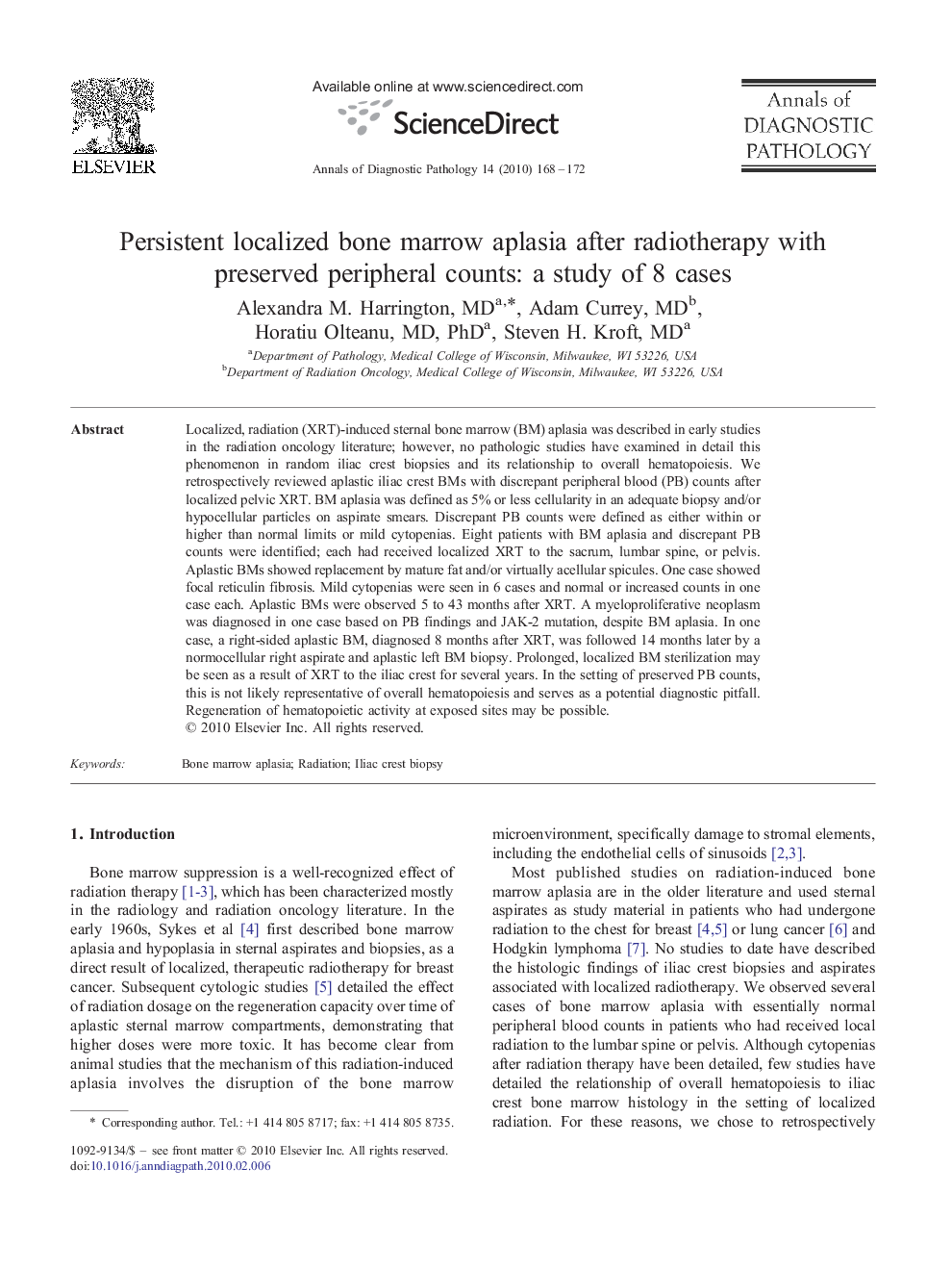| Article ID | Journal | Published Year | Pages | File Type |
|---|---|---|---|---|
| 4130038 | Annals of Diagnostic Pathology | 2010 | 5 Pages |
Localized, radiation (XRT)-induced sternal bone marrow (BM) aplasia was described in early studies in the radiation oncology literature; however, no pathologic studies have examined in detail this phenomenon in random iliac crest biopsies and its relationship to overall hematopoiesis. We retrospectively reviewed aplastic iliac crest BMs with discrepant peripheral blood (PB) counts after localized pelvic XRT. BM aplasia was defined as 5% or less cellularity in an adequate biopsy and/or hypocellular particles on aspirate smears. Discrepant PB counts were defined as either within or higher than normal limits or mild cytopenias. Eight patients with BM aplasia and discrepant PB counts were identified; each had received localized XRT to the sacrum, lumbar spine, or pelvis. Aplastic BMs showed replacement by mature fat and/or virtually acellular spicules. One case showed focal reticulin fibrosis. Mild cytopenias were seen in 6 cases and normal or increased counts in one case each. Aplastic BMs were observed 5 to 43 months after XRT. A myeloproliferative neoplasm was diagnosed in one case based on PB findings and JAK-2 mutation, despite BM aplasia. In one case, a right-sided aplastic BM, diagnosed 8 months after XRT, was followed 14 months later by a normocellular right aspirate and aplastic left BM biopsy. Prolonged, localized BM sterilization may be seen as a result of XRT to the iliac crest for several years. In the setting of preserved PB counts, this is not likely representative of overall hematopoiesis and serves as a potential diagnostic pitfall. Regeneration of hematopoietic activity at exposed sites may be possible.
